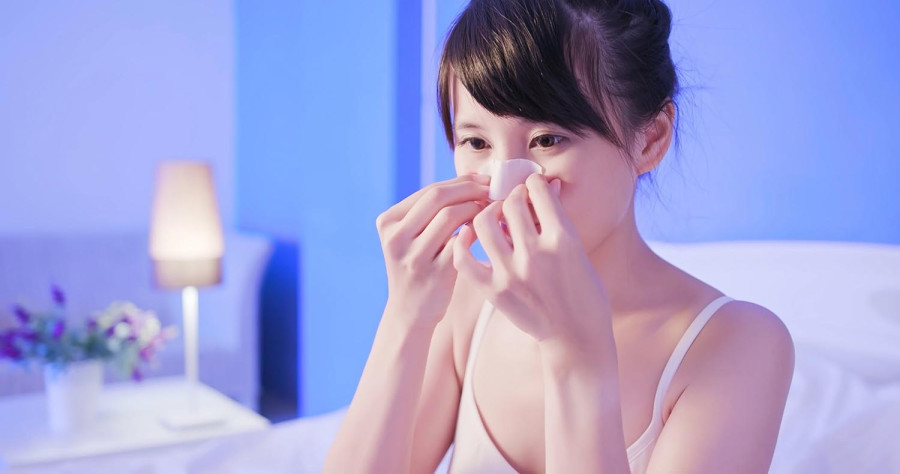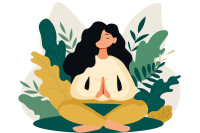Life & Style
Getting rid of comedones
Dermatologist Jebina Lama’s guide to dealing with blackheads and whiteheads.
Rukusha Giri
Blackheads and whiteheads are common problems most teens and people in their 20s and 30s deal with. While they do appear a little different—because blackheads are open comedones while whiteheads are closed ones—and are caused by different things, they can be treated in the same way. The founder of The Skin Clinic, Dr Jebina Lama, is a consultant dermatologist and has been practising aesthetic dermatology for the past nine years. She tells The Post everything one needs to know about black and whiteheads.
What are blackheads and whiteheads?
Pimples and blackheads are not the same thing. Blackheads are visible skin bumps and clogged pores mostly filled with dead skin cells and oils. Open comedones are another name for blackheads. Comedones are skin-coloured bumps that take shape where a pimple forms. They are made up of follicles beneath the skin with huge pores clogged with sebum during the formation of blackheads. A chemical reaction takes place beneath the skin. The clogged pore turns black when a dark pigment under the skin oxidises. These are named blackheads.
Whiteheads are also clogged pores—mostly filled with dead skin cells and oils. Closed comedones are whiteheads covered with skin cells. Excess sebum combines with dead skin cells, forming a plug in the follicle. It bulges outside and creates a whitehead. Acne frequently causes whiteheads on the face, chest, and back.
What age group gets blackheads and whiteheads the most, and why?
People in all age groups get blackheads and whiteheads—except kids below the pre-teen age. Those with active oil glands can get these quite frequently. People in their teens, 20s and 30s suffer from congested pores more than other age groups.
Those with active oil glands prone to acne breakouts can frequently develop whiteheads on their face. Whiteheads can develop into active acne-like nodules, papules and pustules after bacterial infection.
How can one minimise blackheads and whiteheads?
Salicylic acid can be used to eliminate blackheads and whiteheads. Similarly, beta hydroxy acid, commonly used to treat acne, can also reduce blackheads and whiteheads as it boosts cell turnover and clears clogged pores. It can dry active acne lesions because it is a mild chemical irritant.
Another chemical that can be used is retinoids. It opens clogged pores and alters skin cell development, which helps to stop acne from forming. Differin gel is an over-the-counter retinoid containing 0.1% adapalene, an ingredient experts recommend to help treat acne, and blackheads and whiteheads.
Exfoliating acids can also treat whiteheads and blackheads. AHA—with or without BHA—works on the skin’s surface, while BHAs work below the skin’s surface to clear blocked pores and hasten the healing of cystic acne.
People with these problems can start with one ingredient first. All these ingredients are highly irritating, so one must be cautious while using them.
Washing the face regularly—every morning and night—will help kill bacteria and remove dead skin cells, especially before bed or after a sweaty workout.
Vitamins can help the skin fight acne by giving it an extra boost. The most popular vitamins for treating whiteheads are vitamins A, D, zinc, and omega-3 fatty acids.
Blackheads in people have all been connected to zinc, vitamin E, and vitamin A deficiencies. Therefore, taking vitamin E every day in the morning is advised. Supplements with vitamin E are available online.
What is the difference between blackheads and whiteheads?
The substance that makes up white and blackheads—typically a mixture of dead skin cells, oil, and sebum—is the same. Blackheads remain open, while whiteheads have closed pores. Whiteheads are more prone to develop into active acne, whereas blackheads are easier to extract and less prone to develop into active acne. The skin has not yet ruptured in the case of whiteheads. However, the pore only has a limited amount of space. It expands as your body continues to produce oil and dead skin. If the pore remains clogged after opening, the blemish oxidises and becomes a blackhead.
A small number of blackheads and whiteheads are considered normal. They aren’t painful or dangerous to anyone’s health.
Should one see a dermatologist if they have blackheads and whiteheads?
Most individuals will have a small number of blackheads and whiteheads. But if you want to have clear skin without any congestion, then definitely, yes, you should visit a dermatologist.




 19.12°C Kathmandu
19.12°C Kathmandu










